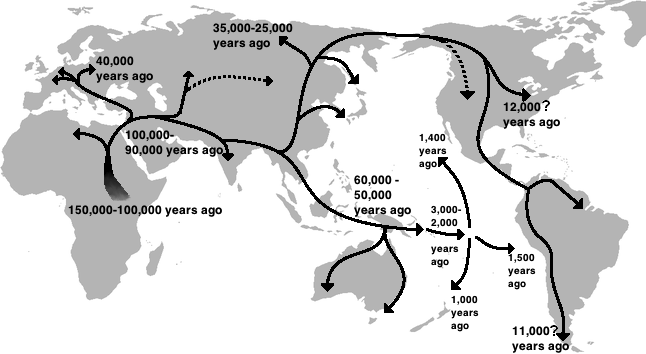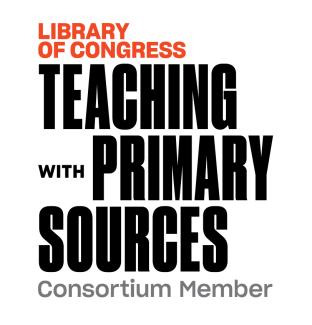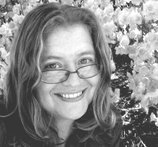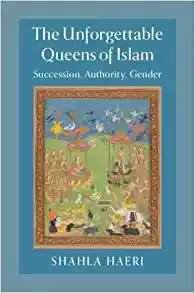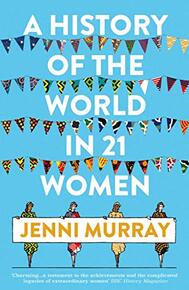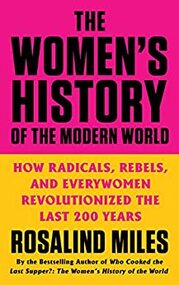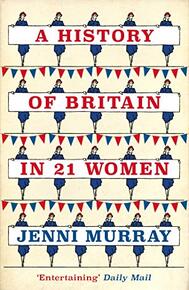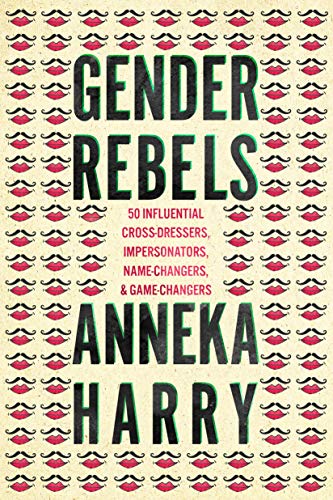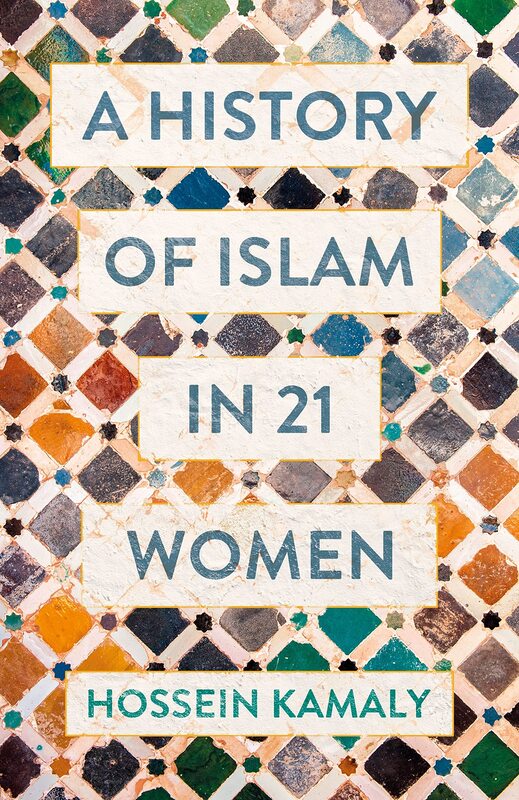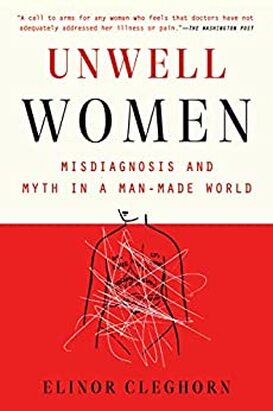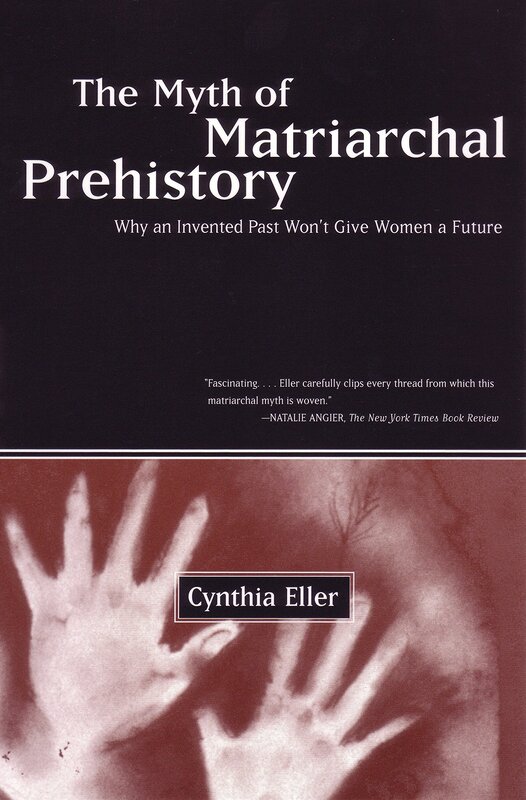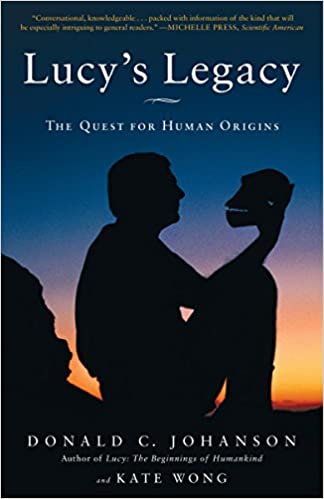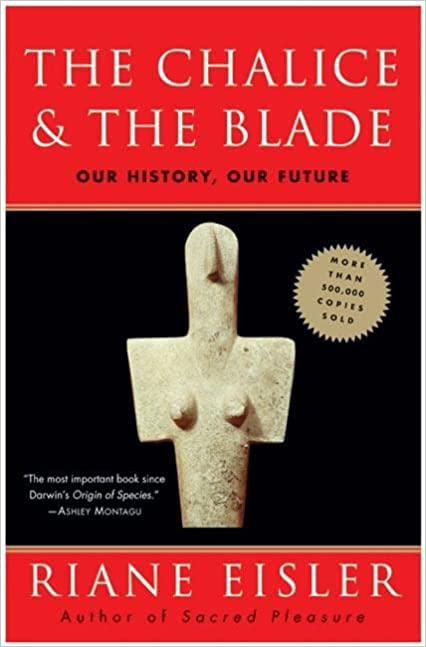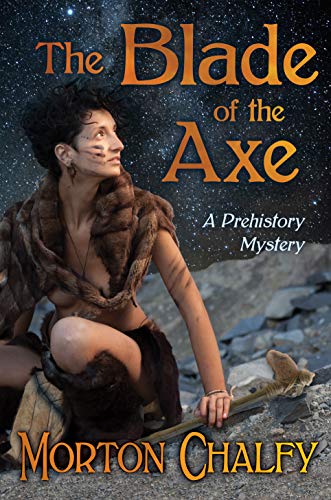1. t0 15,000 Before gendered constructs
Paleo-anthropologists can track human evolution and migration in prehistory by using the remains of women. Such findings have provided some of the most important breakthroughs in our understanding of the past. Humans emerged as hunters and gatherers, and a specific gender dynamic evolved as groups learned to survive. However, there is a debate about whether in fact we can “see gender” in the archeological record and whether gender attribution is helpful for understanding gender relations in pre-history.
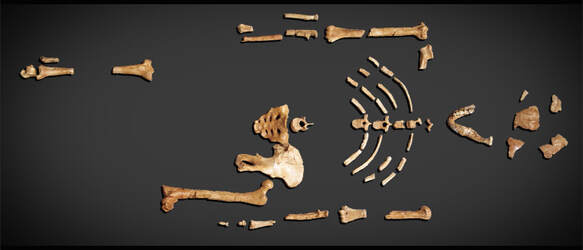 The bones of Lucy, public domain
The bones of Lucy, public domain
Humans began to evolve from their immediate ancestors called hominids nearly 1.9 years ago. The humans we are today evolved in stages from our immediate hominid ancestor, homo erectus. People originally assumed evolution was linear, with one species morphing into another, but discoveries by paleoanthropologists over the last century have shed new light on our prehistoric past. Scholars now understand that evolution could occur in spurts of activity that interrupted long periods of little evolutionary change. This phenomenon is known as punctuated equilibrium.The real breakthrough with evolution came in 1974, with the discovery of Lucy, a Australopithecus, a hominid ancestor, who likely lived around 3 million years ago! Historians have stated, “No other set of hominid remains found before or after is as renowned as ‘Lucy’.” This was the first complete example of a hominid ancestor– and she was FEMALE!
Lucy was found in fragments in the mountains of Ethiopia by a team of white, male researchers. Lucy was short in stature, standing only 3.5 feet tall and her arm-to-leg ratio was much more ape-like than human. Her skull was also quite a bit different from ours. With their small cranial capacity, this group of hominids likely could not think and conceptualize the world in the same ways we do. However, the discovery of Lucy helped to challenge accepted theories of evolution. The researchers saw her remains as evidence that the human ancestral tree was less linear than scientists had assumed. The human tree is more like a bush with different branches, some of which existed at the same time. Neanderthals, for example, lived at the same time as other hominid groups and interbred with them. Decades after Lucy’s discovery, more evidence came to light that confirmed this hypothesis. This evidence included the Dikika child, sometimes referred to as “Lucy's baby,” although they probably lived thousands of years apart. These discoveries and the theories that emerged from them illustrate how scientists work with the data they have and how they generate new ideas as new information is discovered.
Evolution
Human evolution is challenging to reconstruct. We know that humans evolved to have increasingly large brains and a frontal lobe allowing them to understand complex ideas and plan for the future. Humans also began walking upright, which required our ancestors to develop a big toe, more flared hips to support our abdomen and upper bodies, and the S-curve in our spines. These traits presented both advantages and challenges to the evolving human species. For example, women developed wider hips than men to facilitate the birth process.
Lucy was found in fragments in the mountains of Ethiopia by a team of white, male researchers. Lucy was short in stature, standing only 3.5 feet tall and her arm-to-leg ratio was much more ape-like than human. Her skull was also quite a bit different from ours. With their small cranial capacity, this group of hominids likely could not think and conceptualize the world in the same ways we do. However, the discovery of Lucy helped to challenge accepted theories of evolution. The researchers saw her remains as evidence that the human ancestral tree was less linear than scientists had assumed. The human tree is more like a bush with different branches, some of which existed at the same time. Neanderthals, for example, lived at the same time as other hominid groups and interbred with them. Decades after Lucy’s discovery, more evidence came to light that confirmed this hypothesis. This evidence included the Dikika child, sometimes referred to as “Lucy's baby,” although they probably lived thousands of years apart. These discoveries and the theories that emerged from them illustrate how scientists work with the data they have and how they generate new ideas as new information is discovered.
Evolution
Human evolution is challenging to reconstruct. We know that humans evolved to have increasingly large brains and a frontal lobe allowing them to understand complex ideas and plan for the future. Humans also began walking upright, which required our ancestors to develop a big toe, more flared hips to support our abdomen and upper bodies, and the S-curve in our spines. These traits presented both advantages and challenges to the evolving human species. For example, women developed wider hips than men to facilitate the birth process.
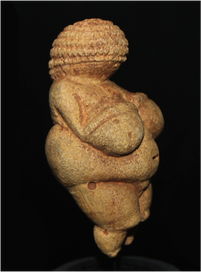 Venus Figurine, Wikimedia Commons
Venus Figurine, Wikimedia Commons
Migration
About 1.8 million years ago humans began to traverse the globe, making their way into Southwest Asia, the Middle East and Europe. 20,000 years ago an Ice Age pushed most of those people south into warmer regions. It is from those people that we learn about the portrayal of the female figure in various cave paintings and burial sites. In eastern Europe, as early as 35,000 years ago there is evidence of more permanent settlements, which included numerous female sculptures known as Venus figurines depicting the female body with exaggerated bodily features. We have no idea how these figures were used. This remains a mystery for now.
One of the ways we know where groups migrated is the presence of women who made it possible for the species to reproduce and leave evidence of their life there. Human migration made it all the way to Australia through the networks of islands in Indonesia as early as 60,000 years ago. In Australia, an elaborate rock painting done by Aboriginal Australians showed a God of creation known as lightning man with his smaller wife etched below him with exaggerated breasts and genitalia.
Humans arrived in the Americas about 15,000 years ago. Scientists believe this occurred in different migrations over land, ice, and sea. These early Americans were known as the Paleoindians, who were followed by another group called the Clovis people. The Clovis culture abruptly disappeared 11,000 years ago. The discovery in 2007 of an ancient teenage girl’s remains in an underwater cave in Yucatan, Mexico illustrates the age of a female presence on this continent. Named by archeologists “Naia”, her remains are estimated to be 12,000-13,000-years-old. She had a hard life characterized by malnutrition and an early pregnancy.
The final thrust of human migration was into the Pacific Ocean and probably only occurred about 3500 years ago. Interestingly, both men and women traveled to these newly discovered Pacific Islands, clearly indicating the intention of establishing permanent settlements.
About 1.8 million years ago humans began to traverse the globe, making their way into Southwest Asia, the Middle East and Europe. 20,000 years ago an Ice Age pushed most of those people south into warmer regions. It is from those people that we learn about the portrayal of the female figure in various cave paintings and burial sites. In eastern Europe, as early as 35,000 years ago there is evidence of more permanent settlements, which included numerous female sculptures known as Venus figurines depicting the female body with exaggerated bodily features. We have no idea how these figures were used. This remains a mystery for now.
One of the ways we know where groups migrated is the presence of women who made it possible for the species to reproduce and leave evidence of their life there. Human migration made it all the way to Australia through the networks of islands in Indonesia as early as 60,000 years ago. In Australia, an elaborate rock painting done by Aboriginal Australians showed a God of creation known as lightning man with his smaller wife etched below him with exaggerated breasts and genitalia.
Humans arrived in the Americas about 15,000 years ago. Scientists believe this occurred in different migrations over land, ice, and sea. These early Americans were known as the Paleoindians, who were followed by another group called the Clovis people. The Clovis culture abruptly disappeared 11,000 years ago. The discovery in 2007 of an ancient teenage girl’s remains in an underwater cave in Yucatan, Mexico illustrates the age of a female presence on this continent. Named by archeologists “Naia”, her remains are estimated to be 12,000-13,000-years-old. She had a hard life characterized by malnutrition and an early pregnancy.
The final thrust of human migration was into the Pacific Ocean and probably only occurred about 3500 years ago. Interestingly, both men and women traveled to these newly discovered Pacific Islands, clearly indicating the intention of establishing permanent settlements.
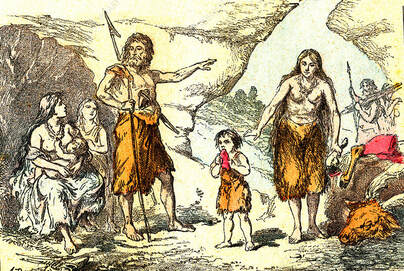 Prehistoric Clan, Public Domain
Prehistoric Clan, Public Domain
Culture in Pre-Written History
95 percent of human history occurred before “history” was recorded. These early hunter gatherer peoples lived mostly in small bands of 25 to 50 people. At some points in the year when food was plentiful, these bands would gather in even larger groups of hundreds of people. At these major events marriages were celebrated, and crucial information was shared. Otherwise these groups moved frequently to follow food sources. They kept very few possessions. Women also bore fewer children because of the constant movement and limited food supply. They also breastfed their children longer, sometimes up to five years, to help space out births as breastfeeding can sometimes prevent pregnancy.
Across the world, there was tremendous variation in human cultures that developed.There was little hierarchy in hunter gatherer culture. Men and women were thus a bit freer than their agricultural descendants and had more free time in their day. Men and women honed a variety of skills and worked altruistically for the good of the group. Roles and tasks were often differentiated by gender.
But this was by no means a golden age for women. Food was often scarce. In Africa and Eurasia, women, children, and the elderly provided the majority of the sustenance through gathering. There’s evidence that up to 70% of the diet of these early peoples came from plants, while meat accounted for only 30%. When the meat supply disappeared, the band moved to find new food sources..
One interesting finding in a 1999 anthropological study of modern foraging groups is that grandmothers actually helped improve the evolutionary fitness of a tribe by assuming responsibility for feeding weaned babies and allowing the young mother to produce more offspring. They call this the “grandmother hypothesis.”
End of the Ice Age
As the Ice Age came to an end between 16,000 and 10,000 years ago, natural global warming allowed for diverse plants and animals to flourish and provide a richer quality of life for humans. Humans began to settle along river valleys and began a long transition to agriculture. Many have seen this transition as a positive one, but for women there were some unforeseen consequences. Geographer and historian Jared Diamond in his once-controversial article, “The Worst Mistake in the History of the Human Race” argued that the invention of agriculture had a horrible impact on human health and led to class differences and the rise of elites, along with sex discrimination.
Some feminist historians agree with Diamond and claim that in hunter-gatherer societies women held a superior status that they lost when societies settled into agricultural life.The theory rests on our prehistoric ancestors’ understanding of cause and effect. The theory goes that women held spiritual status in society as magical creatures that bring about life, because, the theory suggests that our ancestors didn’t understand the role men played in creating life. The creation stories that survive and portray female pagan goddesses in all their sexualized glory may be evidence of this.
But this theory is dated and the evidence is not widely accepted. In the following section we will explore this academic debate to more deeply understand the challenges of prehistory and also to see how the biases of our more egalitarian time can impact our reading of historical events.
By the end of the Ice Age, so much remained in question. How reliable are oral traditions recorded centuries or millennia after they were first told evidence of prehistoric culture? What can other evidence, such as cave paintings, tell us about early cultural development? How would agriculture impact gender dynamics in the centuries to come?
95 percent of human history occurred before “history” was recorded. These early hunter gatherer peoples lived mostly in small bands of 25 to 50 people. At some points in the year when food was plentiful, these bands would gather in even larger groups of hundreds of people. At these major events marriages were celebrated, and crucial information was shared. Otherwise these groups moved frequently to follow food sources. They kept very few possessions. Women also bore fewer children because of the constant movement and limited food supply. They also breastfed their children longer, sometimes up to five years, to help space out births as breastfeeding can sometimes prevent pregnancy.
Across the world, there was tremendous variation in human cultures that developed.There was little hierarchy in hunter gatherer culture. Men and women were thus a bit freer than their agricultural descendants and had more free time in their day. Men and women honed a variety of skills and worked altruistically for the good of the group. Roles and tasks were often differentiated by gender.
But this was by no means a golden age for women. Food was often scarce. In Africa and Eurasia, women, children, and the elderly provided the majority of the sustenance through gathering. There’s evidence that up to 70% of the diet of these early peoples came from plants, while meat accounted for only 30%. When the meat supply disappeared, the band moved to find new food sources..
One interesting finding in a 1999 anthropological study of modern foraging groups is that grandmothers actually helped improve the evolutionary fitness of a tribe by assuming responsibility for feeding weaned babies and allowing the young mother to produce more offspring. They call this the “grandmother hypothesis.”
End of the Ice Age
As the Ice Age came to an end between 16,000 and 10,000 years ago, natural global warming allowed for diverse plants and animals to flourish and provide a richer quality of life for humans. Humans began to settle along river valleys and began a long transition to agriculture. Many have seen this transition as a positive one, but for women there were some unforeseen consequences. Geographer and historian Jared Diamond in his once-controversial article, “The Worst Mistake in the History of the Human Race” argued that the invention of agriculture had a horrible impact on human health and led to class differences and the rise of elites, along with sex discrimination.
Some feminist historians agree with Diamond and claim that in hunter-gatherer societies women held a superior status that they lost when societies settled into agricultural life.The theory rests on our prehistoric ancestors’ understanding of cause and effect. The theory goes that women held spiritual status in society as magical creatures that bring about life, because, the theory suggests that our ancestors didn’t understand the role men played in creating life. The creation stories that survive and portray female pagan goddesses in all their sexualized glory may be evidence of this.
But this theory is dated and the evidence is not widely accepted. In the following section we will explore this academic debate to more deeply understand the challenges of prehistory and also to see how the biases of our more egalitarian time can impact our reading of historical events.
By the end of the Ice Age, so much remained in question. How reliable are oral traditions recorded centuries or millennia after they were first told evidence of prehistoric culture? What can other evidence, such as cave paintings, tell us about early cultural development? How would agriculture impact gender dynamics in the centuries to come?
Draw your own conclusions
|
Learn how to teach with inquiry.
Many of these lesson plans were sponsored in part by the Library of Congress Teaching with Primary Sources Eastern Region Program, coordinated by Waynesburg University, the History and Social Studies Education Faculty at Plymouth State University, and the Patrons of the Remedial Herstory Project. |
Lesson Plans from Other Organizations
- This website, Women in World History has primary source based lesson plans on women's history in a whole range of topics. Some are free while others have a cost.
- The Roy Rosenzweig Center for History and New Media has produced recommendations for teaching women's history with primary sources and provided a collection of sources for world history. Check them out!
- The Stanford History Education Group has a number of lesson plans about women in World History.
Kojiki: Record of Ancient Things
This story is from the Kojiki, the Japanese "Record of Ancient Things". This story was among many that were recorded between 500-700CE to preserve the ancient traditions. The following story is the closest to a creation story there is in this text.
When heaven and earth began, three deities came into being, The Spirit Master of the Center of Heaven, The August Wondrously Producing Spirit, and the Divine Wondrously Producing Ancestor. These three were invisible. The earth was young then, and land floated like oil, and from it reed shoots sprouted. From these reeds came two more deities. After them, five or six pairs of deities came into being, and the last of these were Izanagi and Izanami, whose names mean "The Male Who Invites" and "The Female who Invites".
The first five deities commanded Izanagi and Izanami to make and solidify the land of Japan, and they gave the young pair a jeweled spear. Standing on the Floating Bridge of Heaven, they dipped it in the ocean brine and stirred. They pulled out the spear, and the brine that dripped of it formed an island to which they descended. On this island they built a palace for their wedding and a great column to the heavens.
Izanami examined her body and found that one place had not grown, and she told this to Izanagi, who replied that his body was well-formed but that one place had grown to excess. He proposed that he place his excess in her place that was not complete and that in doing so they would make new land. They agreed to walk around the pillar and meet behind it to do this. When they arrive behind the pillar, she greeted him by saying "What a fine young man", and he responded by greeting her with "What a fine young woman". They procreated and gave birth to a leech-child, which they put in a basket and let float away. Then they gave birth to a floating island, which likewise they did not recognize as one of their children.
Disappointed by their failures in procreation, they returned to Heaven and consulted the deities there. The deities explained that the cause of their difficulties was that the female had spoken first when they met to procreate. Izanagi and Izanami returned to their island and again met behind the heavenly pillar. When they met, he said, "What a fine young woman," and she said "What a fine young man". They mated and gave birth to the eight main islands of Japan and six minor islands. Then they gave birth to a variety of deities to inhabit those islands, including the sea deity, the deity of the sea-straits, and the deities of the rivers, winds, trees, and mountains. Last, Izanami gave birth to the fire deity, and her genitals were so burned that she died.
Donald L. Philippi, trans., 1969, Kojiki: Princeton, Princeton University Press, 655, and Joseph M. Campbell, 1962, The Masks of God: Oriental Mythology: New York, Viking Press, 561.
Questions:
When heaven and earth began, three deities came into being, The Spirit Master of the Center of Heaven, The August Wondrously Producing Spirit, and the Divine Wondrously Producing Ancestor. These three were invisible. The earth was young then, and land floated like oil, and from it reed shoots sprouted. From these reeds came two more deities. After them, five or six pairs of deities came into being, and the last of these were Izanagi and Izanami, whose names mean "The Male Who Invites" and "The Female who Invites".
The first five deities commanded Izanagi and Izanami to make and solidify the land of Japan, and they gave the young pair a jeweled spear. Standing on the Floating Bridge of Heaven, they dipped it in the ocean brine and stirred. They pulled out the spear, and the brine that dripped of it formed an island to which they descended. On this island they built a palace for their wedding and a great column to the heavens.
Izanami examined her body and found that one place had not grown, and she told this to Izanagi, who replied that his body was well-formed but that one place had grown to excess. He proposed that he place his excess in her place that was not complete and that in doing so they would make new land. They agreed to walk around the pillar and meet behind it to do this. When they arrive behind the pillar, she greeted him by saying "What a fine young man", and he responded by greeting her with "What a fine young woman". They procreated and gave birth to a leech-child, which they put in a basket and let float away. Then they gave birth to a floating island, which likewise they did not recognize as one of their children.
Disappointed by their failures in procreation, they returned to Heaven and consulted the deities there. The deities explained that the cause of their difficulties was that the female had spoken first when they met to procreate. Izanagi and Izanami returned to their island and again met behind the heavenly pillar. When they met, he said, "What a fine young woman," and she said "What a fine young man". They mated and gave birth to the eight main islands of Japan and six minor islands. Then they gave birth to a variety of deities to inhabit those islands, including the sea deity, the deity of the sea-straits, and the deities of the rivers, winds, trees, and mountains. Last, Izanami gave birth to the fire deity, and her genitals were so burned that she died.
Donald L. Philippi, trans., 1969, Kojiki: Princeton, Princeton University Press, 655, and Joseph M. Campbell, 1962, The Masks of God: Oriental Mythology: New York, Viking Press, 561.
Questions:
- Is there one god, goddess, or many? Name the characters.
- Who is responsible for creating humans?
- Is anyone asked to be silent in this story? Who?
- What happens to the female characters?
Remedial Herstory Editors. "1. T0 15,000 BEFORE GENDERED CONSTRUCTS." The Remedial Herstory Project. November 1, 2022. www.remedialherstory.com.
Consulting Team |
Editors |
|
Kelsie Brook Eckert, Project Director
Coordinator of Social Studies Education at Plymouth State University Dr. Nancy Locklin-Sofer, Consultant Professor of History at Maryville College. Chloe Gardner, Consultant PhD Candidate in Religious Studies at Edinburgh University Dr. Whitney Howarth, Consultant Former Professor of History at Plymouth State University Jacqui Nelson, Consultant Teaching Lecturer of Military History at Plymouth State University Maria Concepcion Marquez Sandoval PhD Candidate in History at Arizona University |
Ron Kaiser
Humanities Teacher, Moultonborough Academy ReviewersPre-History
Dr. Marieka Brouwer Burg Professor of Anthropology at the University of Vermont Ancient: Dr. Kristin Heineman Professor of History at Colorado State University Dr. Bonnie Rock-McCutcheon Professor of History at Wilson College Sarah Stone PhD Candidate in Religious Studies at Edinburgh University Medieval: Dr. Katherine Koh Professor of History at La Sierra University Dr. Jonathan Couser Professor of History at Plymouth State University Dr. Shahla Haeri Professor of History at Boston University Lauren Cole PhD Candidate in History at Northwestern University Modern: Dr. Barbara Tischler Supervisor for Hunter College Dr. Pamela Scully Professor of Women’s, Gender, and Sexuality Studies and African Studies at Emory University |
Survey's on womens World History
|
In this landmark study, Shahla Haeri offers the extraordinary biographies of several Muslim women rulers and leaders who reached the apex of political systems of their times.
|
The history of the world is the history of great women, their names should be shouted from the rooftops and that is exactly what Jenni Murray is here to do.
|
Recording the important milestones in the birth of the modern feminist movement and the rise of women into greater social, economic, and political power, Miles takes us through through a colorful pageant of astonishing women
|
Jenni Murray presents the history of Britain as you’ve never seen it before, through the lives of twenty-one women who refused to succumb to the established laws of society, whose lives embodied hope and change, and who still have the power to inspire us today..
|
|
Meet the unsung sheroes of history: the diverse, defiant and daring (wo)men who changed the rules, and their identities, to get sh*t done.
|
Beginning in seventh-century Mecca and Medina, A History of Islam in 21 Women takes us around the globe, through eleventh-century Yemen and Khorasan, and into sixteenth-century Spain, Istanbul and India. From there to nineteenth-century Persia and the African savannah, to twentieth-century Russia, Turkey, Egypt and Iraq, before reaching present day London.
|
A trailblazing, conversation-starting history of women’s health—from the earliest medical ideas about women’s illnesses to hormones and autoimmune diseases—brought together in a fascinating sweeping narrative.
|
Pre-History (3,300,000-3000 BCE)
|
According to the myth of matriarchal prehistory, men and women lived together peacefully before recorded history. Society was centered around women, with their mysterious life-giving powers, and they were honored as incarnations and priestesses of the Great Goddess. Then a transformation occurred, and men thereafter dominated society.
|
Lucy is a 3.2-million-year-old skeleton who has become the spokeswoman for human evolution. She is perhaps the best known and most studied fossil hominid of the twentieth century, the benchmark by which other discoveries of human ancestors are judged.”–From Lucy’s Legacy
|
The Chalice and the Blade tells a new story of our cultural origins. It shows that warfare and the war of the sexes are neither divinely nor biologically ordained. It provides verification that a better future is possible—and is in fact firmly rooted in the haunting dramas of what happened in our past.
|
|
They live in caves and huddle around fires, but they are fully human, though they belong to our most ancient history. Risa the Arbiter has now spent years in her role and is known and respected throughout the area. Her children are half-grown and exhibiting traits of independence, both of thought and action. Her tribe has grown along with her and now needs more than one Arbiter can provide alone. Risa struggles with how best to organize her duties and establishes acolytes in each village to screen petitioners.
|
How to teach with Films:
Remember, teachers want the student to be the historian. What do historians do when they watch films?
- Before they watch, ask students to research the director and producers. These are the source of the information. How will their background and experience likely bias this film?
- Also, ask students to consider the context the film was created in. The film may be about history, but it was made recently. What was going on the year the film was made that could bias the film? In particular, how do you think the gains of feminism will impact the portrayal of the female characters?
- As they watch, ask students to research the historical accuracy of the film. What do online sources say about what the film gets right or wrong?
- Afterward, ask students to describe how the female characters were portrayed and what lessons they got from the film.
- Then, ask students to evaluate this film as a learning tool. Was it helpful to better understand this topic? Did the historical inaccuracies make it unhelpful? Make it clear any informed opinion is valid.
Documentaries
|
Ascent of Woman: is a documentary about prehistoric and Ancient women's history across cultures.
IMDB |
|
|
|
|
Witches: A Century of Murder is about the witch trials that plagued England under Kings James IV and I and Charles I.
|
|
|
Taking Root is a documentary about the first African woman to win the Nobel Peace Prize, Wangari Maathai. She was from Kenya and her work was on environmental protection.
IMDB |
|
Feature Length Movies
|
The Last Duel highlights the way that rape was handled in medieval Europe. It barely passes the Bechdel Test, with main actors being the male characters, but the whole theme of sex, sexuality, and gender dynamics cannot be ignored.
IMDB |
|
|
Elizabeth tells the story of Elizabeth's Golden era.
IMDB |
|
|
Mary Queen of Scots is a film about the relationship between the Protestant Queen Elizabeth I of England and her Catholic cousin Mary Queen of Scots who challenged her throne.
IMDB |
|
Catherine the Great is about the career of Catherine of Russia and her challenges as a female leader.
IMDB |
|
|
The Favorite is about the interesting palace life of Queen Anne and her closest female confidants. This film expands upon rumors of lesbianism within the court.
|
|
|
The Woman King is a film about the Dahomey "Amazons," women warriors who fought European imperialism in West Africa.
IMDB |
|
|
Albert Nobbs is a film about the life of a poor woman living in 19th century Ireland who cross dresses in order to improve her station.
IMDB |
|
|
Victoria and Abdul is a film about the interesting relationship between Queen Victoria and Abdul Karim, an Indian man who earned her confidence.
IMDB |
|
|
Suffragette tells the stories of English women who grappled with a way to have their voices heard in the early movement.
IMDB |
|
|
The Danish Girl is historical fiction based losely on the life and marriage of a transgender pioneer.
IMDB |
|
|
A Call to Spy is about the first British and American women spies that worked on the ground in France during WWII.
IMDB |
|
|
|
|
Frida is a film about the first Mexican woman to have her work displayed at the Louvre in Paris, FR.
IMDB |
|
|
|
Television Series
|
The White Queen and the series that follow are based on a historical fiction novel about the rise of the Tudor family in England. The main characters are the women, who through marriage gain and lose the crown.
IMDB |
|
|
The Serpent Queen tells the story of Queen Catherine de Medici of France and the complexities of being a queen regent.
|
|
|
The Tudors tells the story of Henry VIII and each of his six wives. Remember the old school tale: divorced, beheaded, died, divorced, beheaded, survived.
IMDB |
|
|
Victoria is a TV series about the rise and career of Queen Victoria, whose reign spanned much of the 19th century.
IMDB |
|
|
The Crown is a TV series that shows the rise and career of the current Queen of England, Elizabeth II. Her reign began shortly after WWII.
IMDB |
|
Bibliography
Diamond, Jared. “The Worst Mistake in Human History.” Discover Magazine, 1987. http://public.gettysburg.edu/~dperry/Class%20Readings%20Scanned%20Documents/Intro/Diamond.PDF.
Dobres, Marcia-Anne. “Gender in the Formation of the Earliest Human Societies.” In Teresa Meade and Marcy Weiner-Hanks, eds, A Companion to Gender History. John Wiley & Sons, 2008, 211-227.
Gruss, Laura Tobias, and Daniel Schmitt. “The evolution of the human pelvis: changing adaptations to bipedalism, obstetrics and thermoregulation.” Philosophical transactions of the Royal Society of London. Series B, Biological sciences vol. 370,1663 (2015): 20140063. doi:10.1098/rstb.2014.0063
Landau, Elizabeth. "How Much Did Grandmothers Influence Human Evolution? Scientists debate the evolutionary benefits of menopause." Smithsonian Magazine. January 4, 2021. https://www.smithsonianmag.com/science-nature/how-much-did-grandmothers-influence-human-evolution-180976665/.
Pollard, Elizabeth and Clifford Rosenberg, Ed. World Together Worlds Apart: A Companion Reader, 2nd Edition, Volume 1. New York: Norton & Company, Inc, 2016.
Schrein, Caitlin. "Lucy: A marvelous specimen." Nature Education Knowledge 6(7):2, 2015. https://www.nature.com/scitable/knowledge/library/lucy-a-marvelous-specimen-135716086/.
Strayer, R. and Nelson, E., Ways Of The World. 3rd ed. Boston: Bedford/St. Martin’s, 2016.
Swaminathan, Nikhil. "Naia—the 13,000-Year-Old Native American." Archaeology. January/February 2015. https://www.archaeology.org/issues/161-1501/features/2793-mexico-cave-clovis-dna-naia
Dobres, Marcia-Anne. “Gender in the Formation of the Earliest Human Societies.” In Teresa Meade and Marcy Weiner-Hanks, eds, A Companion to Gender History. John Wiley & Sons, 2008, 211-227.
Gruss, Laura Tobias, and Daniel Schmitt. “The evolution of the human pelvis: changing adaptations to bipedalism, obstetrics and thermoregulation.” Philosophical transactions of the Royal Society of London. Series B, Biological sciences vol. 370,1663 (2015): 20140063. doi:10.1098/rstb.2014.0063
Landau, Elizabeth. "How Much Did Grandmothers Influence Human Evolution? Scientists debate the evolutionary benefits of menopause." Smithsonian Magazine. January 4, 2021. https://www.smithsonianmag.com/science-nature/how-much-did-grandmothers-influence-human-evolution-180976665/.
Pollard, Elizabeth and Clifford Rosenberg, Ed. World Together Worlds Apart: A Companion Reader, 2nd Edition, Volume 1. New York: Norton & Company, Inc, 2016.
Schrein, Caitlin. "Lucy: A marvelous specimen." Nature Education Knowledge 6(7):2, 2015. https://www.nature.com/scitable/knowledge/library/lucy-a-marvelous-specimen-135716086/.
Strayer, R. and Nelson, E., Ways Of The World. 3rd ed. Boston: Bedford/St. Martin’s, 2016.
Swaminathan, Nikhil. "Naia—the 13,000-Year-Old Native American." Archaeology. January/February 2015. https://www.archaeology.org/issues/161-1501/features/2793-mexico-cave-clovis-dna-naia
